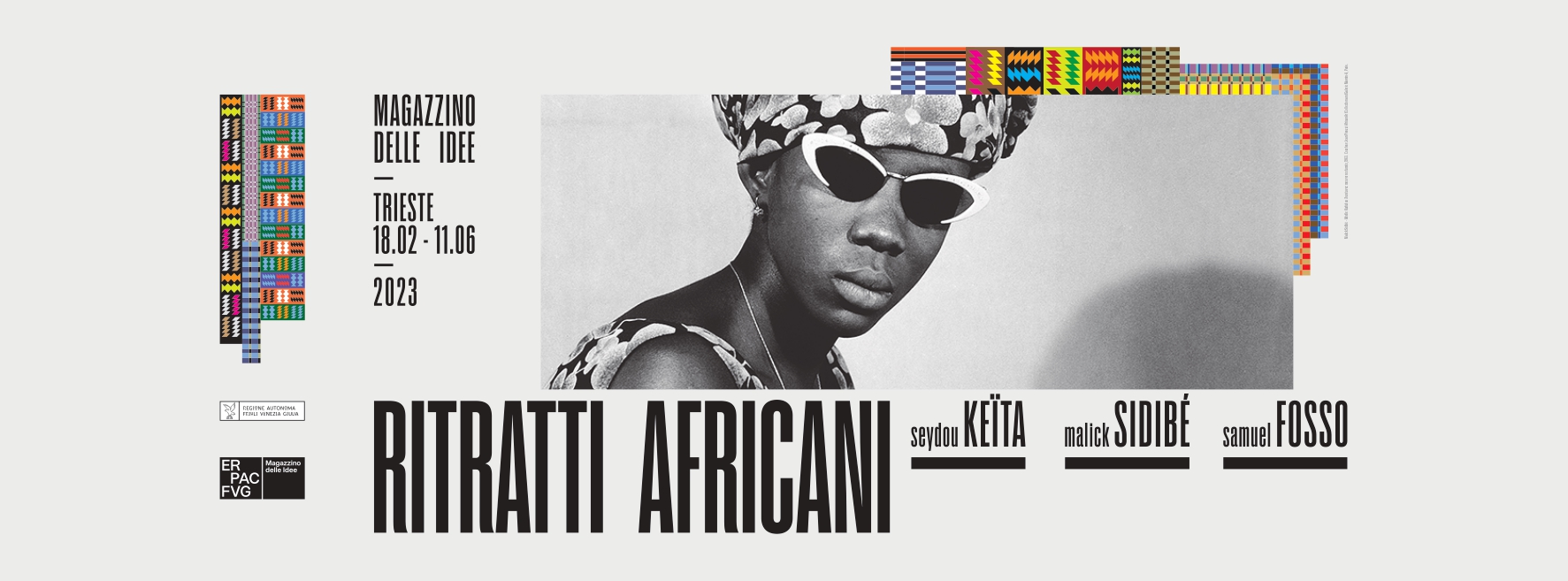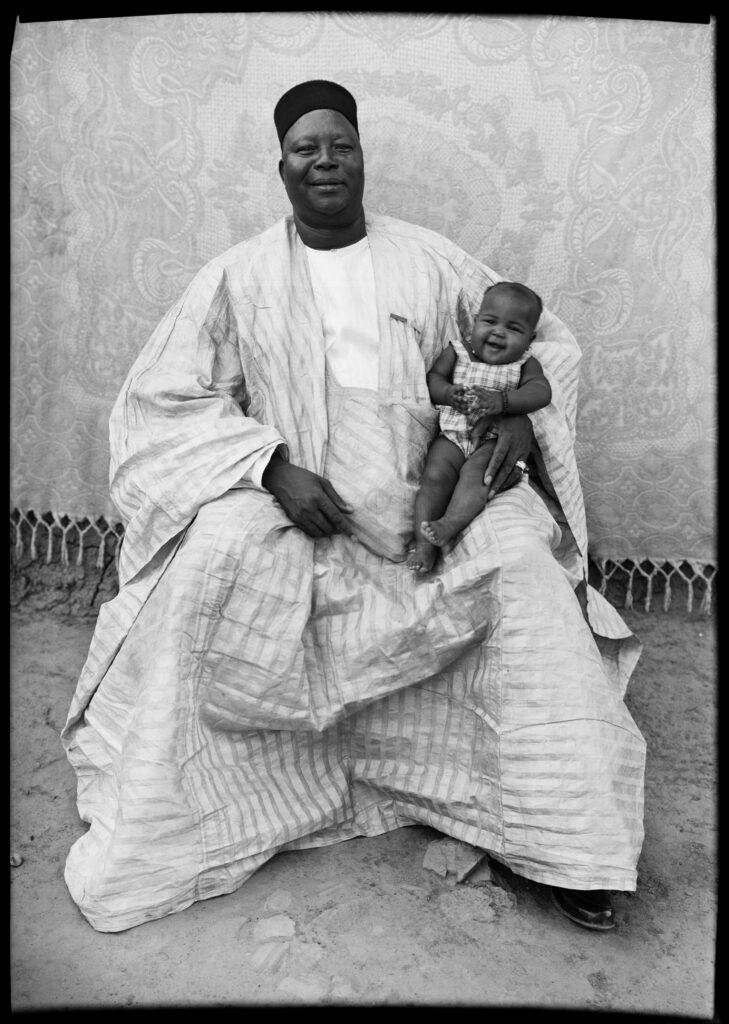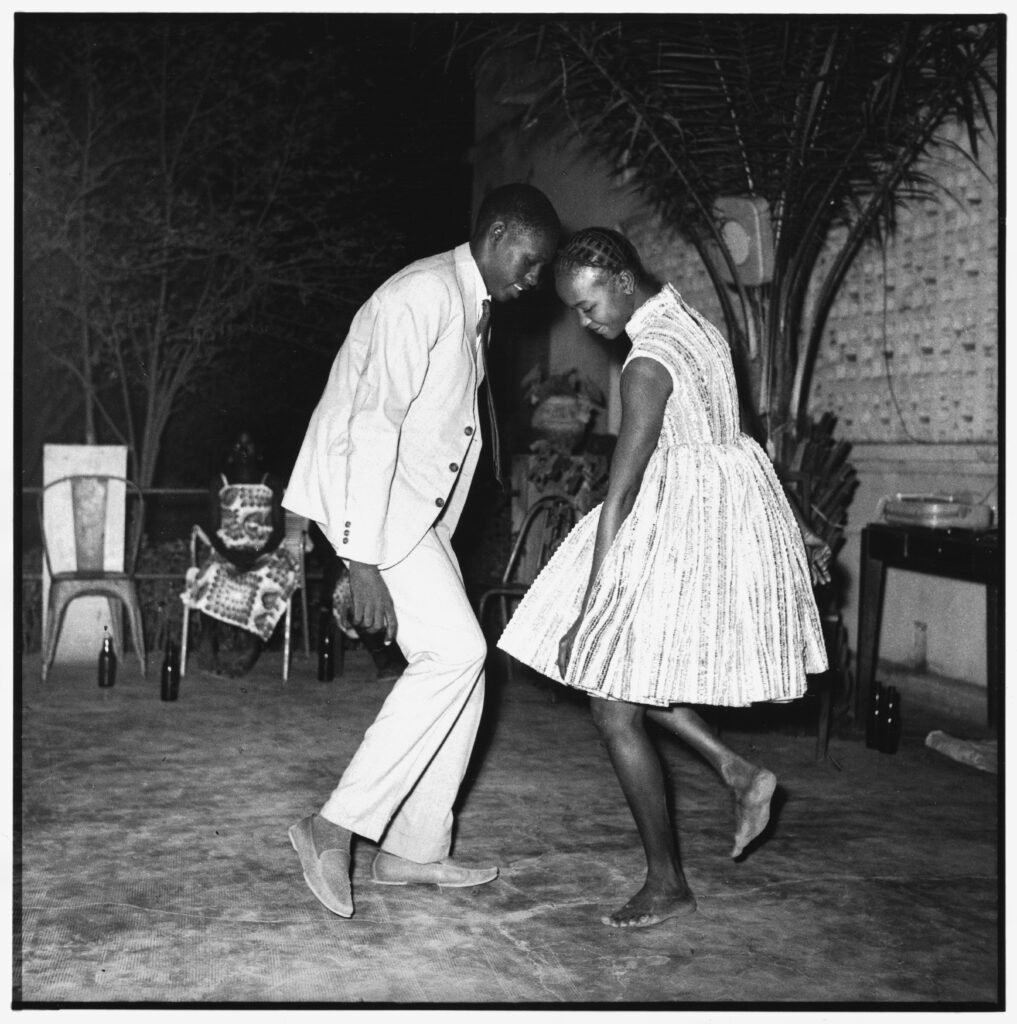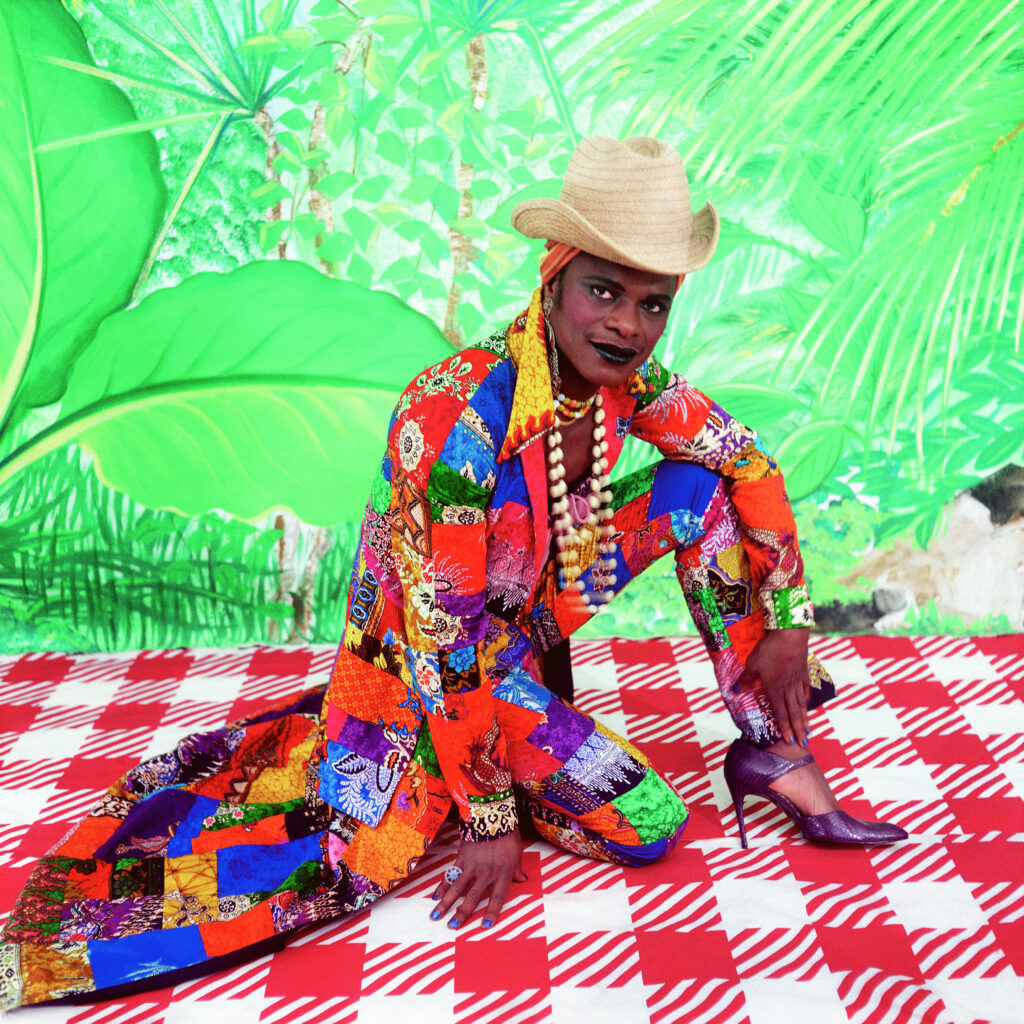Seydou Keïta Malick Sidibé Samuel Fosso

From 18.02.2023 to 11.06.2023
The exhibition African Portraits. Seydou Keïta, Malick Sidibé, Samuel Fosso curated by Filippo Maggia presents over one hundred works by the three most famous African photographers at the Magazzino delle idee.
The exhibition
Only discovered in relatively recent years, the three artists have been presented in the world’s greatest museums, but only on two occasions before have their works been presented in an exclusive dialogue.
In 1997, to celebrate the fiftieth anniversary of the founding of the Tati emporiums in Paris, Seydou Keïta, Malick Sidibé and Samuel Fosso were invited by the department store’s management to take portraits and self-portraits replicating the typical African photographic studio, in the hope of meeting the favour and interest of the multi-ethnic public of the neighbourhood.
The Paris event was one of the two instances in which the three photographers exhibited together without being joined by other African authors, as has happened in the numerous group exhibitions dedicated to African photography since the mid-1990s. As in the case of Tati, twenty-five years later the exhibition “African Portraits” brings the three photographers together in Trieste, presenting an important selection of works for each of them, highlighting and reasoning on the stylistic differences and differences in their approach to the photographic medium: classic portraits in black and white for Keïta and Sidibé, self-portraits in black and white and in colour for Fosso, the latter from the series created for Tati.
We could venture a sort of relay between the three artists, Keïta active in the years preceding Mali’s independence (which took place in 1960), Sidibé living and narrating the years immediately following independence, Fosso who was born in the years when several African countries achieved independence. A relay race that we also find in the contents of their images, as if the narrative thread traced by Keïta at the end of the 1940s had then found its own evolutionary path that runs in parallel with the progressive conquest and manifestation of a conscious African-ness, a distinctive sign that we read in their portraits, which not by chance become self-portraits in Fosso.
The portrait, in fact, is a peculiar characteristic of African photography. Just as ‘street photography’ can be traced back to American photography and landscape photography is inextricably linked to the Italian tradition, portraiture has certainly been the favourite genre of many African photographers throughout the last century and, evolving in its meaning, to a large extent also in the current one. Historical, political, social and religious reasons underlie this practice pursued with constant assiduity from north to south, from west to east of the third largest continent on our planet. (Filippo Maggia, from the exhibition catalogue)
The artists

Seydou Keïta (Bamako 1921,1923-Paris 2001) descendant of the Soudyata Keïta clan that gave rise to the Mali Empire in the 12th and the Touré dynasty, founder of the city of Bamako.
He began photographing professionally in 1948, during the colonial period.
His portraits are characterised by the use of natural light, monochrome or geometric backdrops, which he creates himself. The subjects are portrayed in their traditional clothes, complete families, festively dressed, adorned with jewellery and with well-groomed hairstyles.
In 1962, two years after Mali’s independence, he started working as an official photographer for the Malian government, documenting diplomatic, cultural and political meetings. He retired from photography in 1977.
His international success came in 1991 when his shots were brought to light by André Magnin, an expert curator of African Art, who was struck by three photographs displayed in the exhibition “Africa explores: 20th Century African Arts” presented in New York and decided to travel to Mali, taking with him photocopies of the photographs to track down the author of those images. Within a few years, exhibitions followed at the Fondation Cartier in Paris and at galleries in New York. He chose to photograph in black and white throughout his career.

Malick Sidibé: born into a Fulani (Peul in French) family, after his studies at the Maison des Artisans Soudanais in Bamako, he learnt the first rudiments of photography as an apprentice in the workshop of Gérard Guillat (known as Gégé la Pellicule).
Once he opened his studio in Bamako in 1962, he portrayed the “Dolce Vita” of 1960s and 1970s Bamako. He lived the euphoria of Mali’s independence in the early 1960s to the full, recording with his camera the carefreeness and freedom of young people, now free of the taboos that had influenced their parents. He recounts the rebellious and dreamy youth, protagonists of parties that lasted until dawn on the banks of the Niger River. Faces, poses, nights of music, turntables, dancing, pop and afro-beat fashion. In his portraits, people, free to use costumes and objects at their disposal (glasses, radios, flowers, etc.) appear in all their expressiveness and intensity. His work has been exhibited in Europe and the United States since 1994, culminating in two major awards: the Hasselblad Prize, one of the highest lifetime achievement awards for a photographer, received in 2003, and the Golden Lion at the Venice Art Biennale in 2007 (the first photographer to receive this prize).

Samuel Fosso: Born in Cameroon, he spent most of his childhood in Nigeria, among his people, the Igbo.
In 1967, the Biafra civil war broke out in Nigeria, so Fosso moved to Bangui, capital of the Central African Republic, to work in his uncle’s shoe factory. Here in 1975, at only 13 years of age, he opened his first photography studio ‘Studio Photo National’. The success he enjoyed among the local population allowed him to devote himself to his personal projects such as self-portraiture. A passion that began as a way to finish the rolls of film and send photos of himself to his grandmother who remained in Nigeria, became a research on self-representation related to contemporary social, cultural and political issues. Compared to Seydou Keïta and Malick Sidibé, his photographs have a strong theatrical sense. In his photographic series he evokes and pays homage to important political and cultural figures (African Spirits), reflects on the post-colonial relationship between France and its former colonies (Allonzenfans), and questions the contradictions of the Christian religion (Black Pope). His works are exhibited in major international museums such as the Tate Modern in London and MoMA in New York.
Since 2014, following the outbreak of civil war, he has been living between France and Nigeria.
Catalogue
The exhibition is accompanied by the volume African Portraits. Seydou Keïta, Malick Sidibé, Samuel Fosso published by Electa on the occasion of the exhibition.
Opening hours
from Tuesday to Sunday 10.00 am -07.00 pm
Monday closed
Special openings
9, 10, 24 e 25 April
1 May
2 June
Tickets
Full-price ticket € 8,00
Reduced ticket € 5,00:
– 65 years and over
-children from 13 to 18 years of age
– students up to the age of 26
– differently abled
Free of charge:
– children up to 12 years of age
– group leaders (1 per group)
– visiting teachers with pupils/students (2 per group)
– one accompanying person per disabled person
– ICOM cardholders
– journalists with a valid National Order card on duty
Groups (min 10 people – max 25 people):
€5.00 each without guide
€4.00 each with guide (plus €50.00 for the guide)
The ticket office closes half an hour before
Information
email: info@magazzinodelleidee.it
phone +39 040 3774783
Social
Facebook: @magazzinoideetrieste
Instagram: @magazzinodelleidee
#magazzinodelleidee
Press office
Margherita Baleni
email: margherita.baleni@battage.net
phone +39 347 4452374
Alessandra de Antonellis
email: alessandra.deantonellis@ddlstudio.net
phone +39 339 3637388

